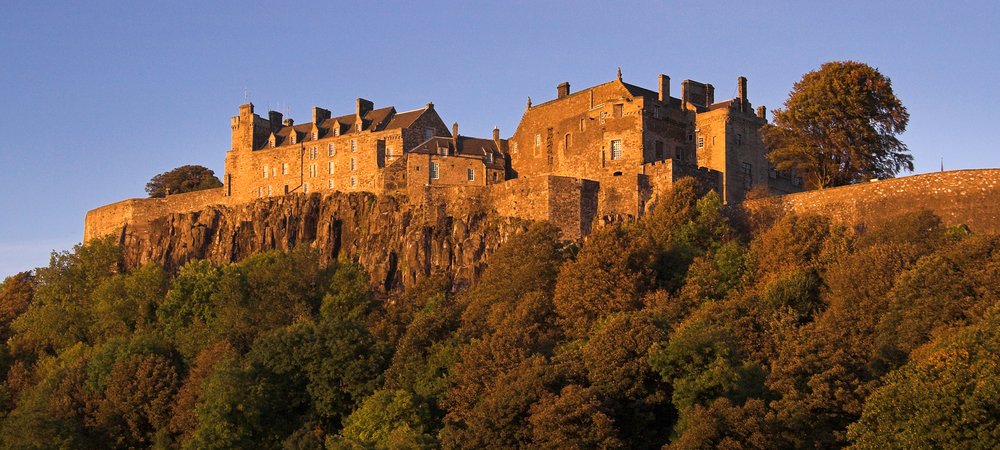Linlithgow Palace
The impressive remains of this royal palace stand at the centre of Linlithgow, surrounded by parkland and overlooking Linlithgow Loch. Approach the palace via Kirkgate, passing wall plaques that show the succession linking Mary Queen of Scots to the current monarch. This leads to the Palace Gateway and St Michael’s Church with its modern flying spire.
The building of the palace started in 1425 under James I of Scotland, after a manor house on the site (and much of Linlithgow) was burned down in an attack by English forces in 1424. The palace was home to Scottish monarchs over the next century, and was largely completed by James III and other successors kings of the House of Stewart. Mary Queen of Scots, the ill-fated daughter of James V, was born there in 1542.
The palace changed hands many times, its condition much affected by its latest visitors or attackers. It was used by Oliver Cromwell in 1650-51 and visited by Bonnie Prince Charlie, the Young Pretender and leader of the second Jacobite rising. In 1745, government troops stayed in the palace before pursuing him to defeat at Culloden. They torched the palace when they left in 1746.
The roofless remains that you see today are largely as the Hanoverian troops left it, with ground and first floors mainly accessible, plus some higher parts in the corner towers. Don’t miss the fine stone fountain in the palace courtyard. It was commissioned in 1537 by James V and beautifully restored in 2005. It operates at weekends in summer only, to limit damage by erosion.
The castle overlooks Linlithgow Loch, a special nature reserve. Formed thousands of years ago, the loch is important for its wide variety of waterfowl and aquatic plants. A path known as ‘The Peel’ circuits the loch and offers great views across to the palace.
Linlithgow Palace
Kirkgate
Linlithgow
West Lothian
EH49 7AL
www.historicenvironment.scot
Open annually with seasonal variation
Private tours that visit this location:

